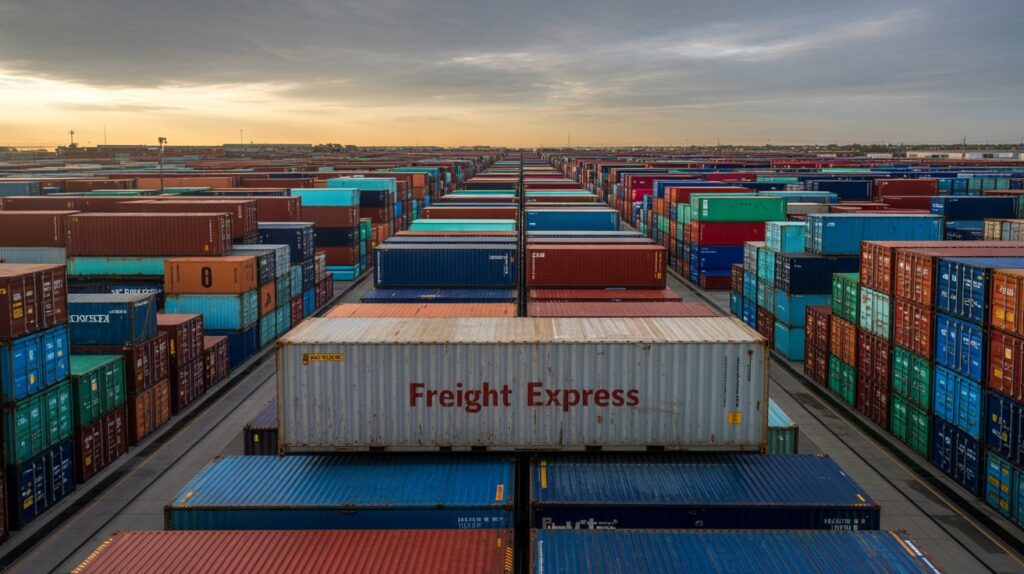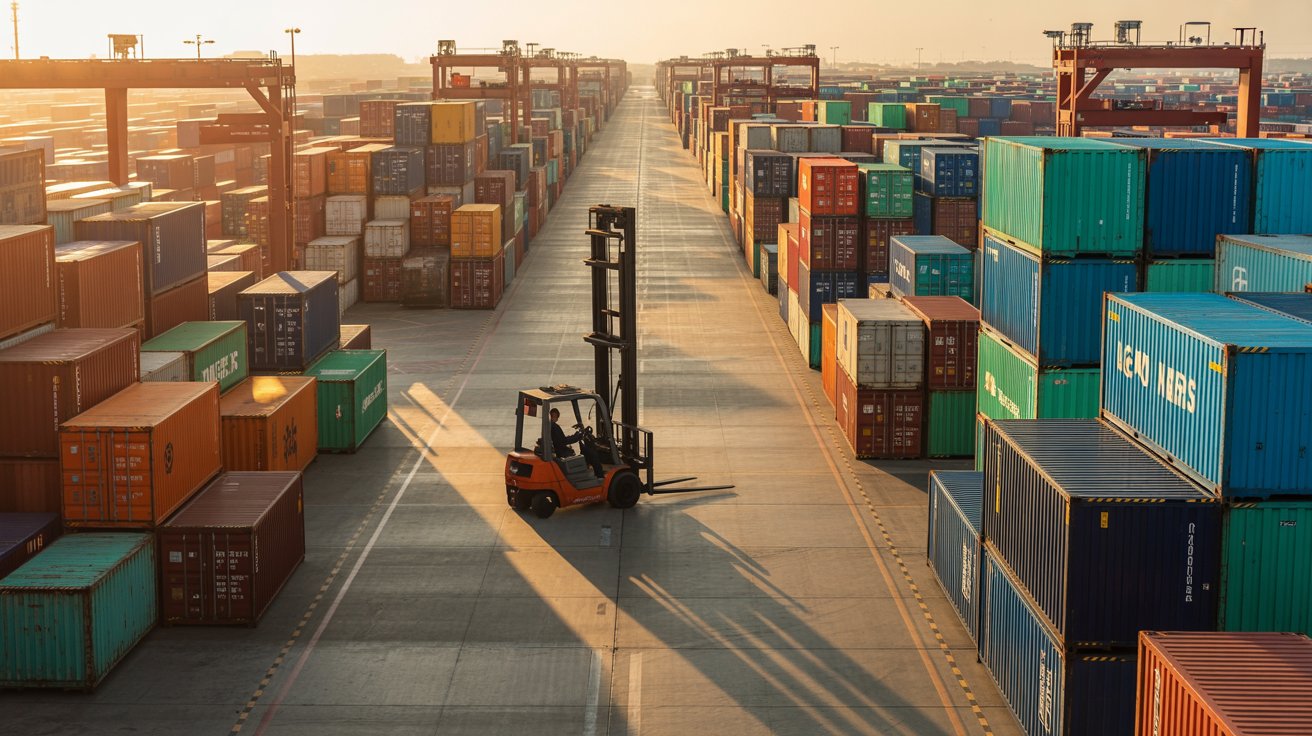Have you ever wondered just how shipping containers are stacked so high without toppling over? It’s a question that intrigues many, especially when you consider the sheer volume of goods transported worldwide. Containers are a robust solution for global shipping, but their stacking isn’t as straightforward as it might appear. There’s an intricate dance of physics, engineering, and regulations that ensures these containers stay securely piled and safely transported across seas and lands. Understanding these stacking limits is crucial for maximizing the efficiency and safety of shipping operations.
Understanding Shipping Containers
Shipping containers are standard-sized boxes used to transport goods across the world. They have revolutionized the way goods are transported by providing a consistent, reliable, and efficient method to move a variety of items over vast distances.
What are Shipping Containers?
Shipping containers are large, rectangular boxes made primarily of steel, designed for intermodal transport—meaning they can be used across various modes of transportation like ships, trains, and trucks. The standard sizes are generally 20 feet or 40 feet in length, with 8.5 feet in height, but there are variations like high cube containers which are taller.
Purpose and Use
These containers are designed to protect goods during transportation and simplify the logistics by allowing easy handling. From refrigerated units for perishable goods to tanks for liquids, there’s a multitude of container types, each serving a different purpose. Understanding the purpose of each type helps determine how it can be effectively utilized and stacked.
The Science Behind Stacking
There’s more to container stacking than meets the eye. Engineering principles, material strengths, and strategic alignment all play a role in determining how these containers can be piled safely.
Load Bearing and Structural Design
The containers are engineered to bear substantial weight. Their corners, usually reinforced with steel castings, are designed to handle the compressive stresses of stacking. A single container is capable of supporting a vast amount of weight, sometimes up to several tens of tons, due to its robust structure.
Factors Affecting Stacking
Several elements impact how many containers can be stacked:
- Weight distribution: Proper weight distribution is crucial to avoid undue pressure on a specific point, which can lead to structural failure.
- Container condition: Dents and damages may compromise integrity, affecting stackability.
- Environmental conditions: Wind and weather can influence how containers should be stacked, often requiring adjustments in alignment and support.
Standard Stacking Practices
Typically, shipping companies adhere to strict stacking practices to circumvent any mishaps. The standard rule of thumb is stacking no higher than eight to ten containers, but this can vary based on specific circumstances and advancements in container technology.

Container Stacking Regulations
Stacking isn’t just about physics; it follows stringent regulations to ensure safety and efficiency. These regulations are enacted by authorities such as the International Maritime Organization (IMO).
International Maritime Organization (IMO) Guidelines
The IMO provides detailed guidelines on how containers should be stacked. This includes ensuring even loading, using proper securing techniques, and adhering to maximum weight limits for stability.
Safety Protocols
Safety protocols ensure that each stacking sequence is meticulously planned and executed. These include:
- Using twist-locks: These are integral to locking containers together at their corners for stability.
- Adhering to maximum weight laws: Overloading a container stack can lead to toppling or failures.
Balancing Efficiency and Safety
The balance between efficient space utilization and the unwavering need for safety is a constant challenge in stacking operations.
Achieving Maximum Efficiency
To achieve maximum efficiency, stacking is often executed with precision and limited space wastage. This means using the space vertically by stacking as many containers as possible without breaching safety protocols.
Ensuring Safety Standards
Even as shipping lines push for greater efficiency, safety remains paramount. Regular checks and balances, such as verifying the condition of containers and ensuring that all safety mechanisms like twist-locks are operational, are essential.

Innovations in Stacking Techniques
With advancements in technology, stacking methods continue to evolve. Innovations are assisting in improving both the safety and efficiency of container stacking, ultimately revolutionizing the shipping industry.
Automated Stacking
Innovative automated systems are now in place that can stack containers with remarkable accuracy and speed. These systems minimize human error, which is often a risk factor for stacking mishaps.
Advanced Materials
New materials are being used to construct containers, enhancing their strength-to-weight ratios and allowing them to bear more weight, which could influence future stacking practices.
Practical Considerations
There are practical considerations that must be taken into account in stacking operations. These include varying load requirements, container types, and shipping conditions. All these factors need to be assessed to optimize stacking.
Different Shipping Scenarios
Not all shipping scenarios will encounter the same conditions. Varying port facilities, labor skills, and available space all influence maximum stacking heights and methods.
Financial Implications
Container stacking isn’t just about logistics; it impacts financial outcomes as well. Efficient stacking lowers shipping costs, increases a vessel’s carrying capacity, and enhances delivery speeds, resulting in competitive advantages.
Case Studies in Container Stacking
Examining real-world case studies can provide insight into both successful and unsuccessful stacking operations.
Success Story: Efficient Stacking
Consider a shipping line that implemented a new method of automated checks on container conditions before stacking. This resulted in a noted decrease in accidents and improved turnover times.
Lessons Learned from Failures
Conversely, looking at stacking failures, you find common themes such as lax protocol adherence or environmental miscalculations, which have prompted industry-wide enhancements in both materials and methods.
Closing Thoughts
The art and science of stacking shipping containers seamlessly blend engineering precision with logistical expertise, governed by international regulations and constant technological advancements. Recognizing the factors that dictate the limits to which containers can be stacked ensures not only the operational efficiency of shipping lines but, more critically, the safety of crews, cargo, and vessels.
Understanding these concepts doesn’t just apply to those in the shipping industry; anyone with a curious mind can appreciate the intricate planning and meticulous execution required to keep global commerce moving smoothly across the seas.
Key Takeaways
- Shipping containers must adhere to specific size standards.
- Stacking relies heavily on engineering principles and structural integrity.
- Regulations by authorities like the IMO ensure safety in stacking practices.
- Innovations are continually evolving stacking methodologies.
- Practical scenarios vary the stacking capabilities and efficiencies.
Through continuous innovation, adherence to safety regulations, and understanding of the stacking dynamics, the shipping industry continues to thrive globally. It’s not just about how many shipping containers can be stacked, but how they can be stacked safely and efficiently.

